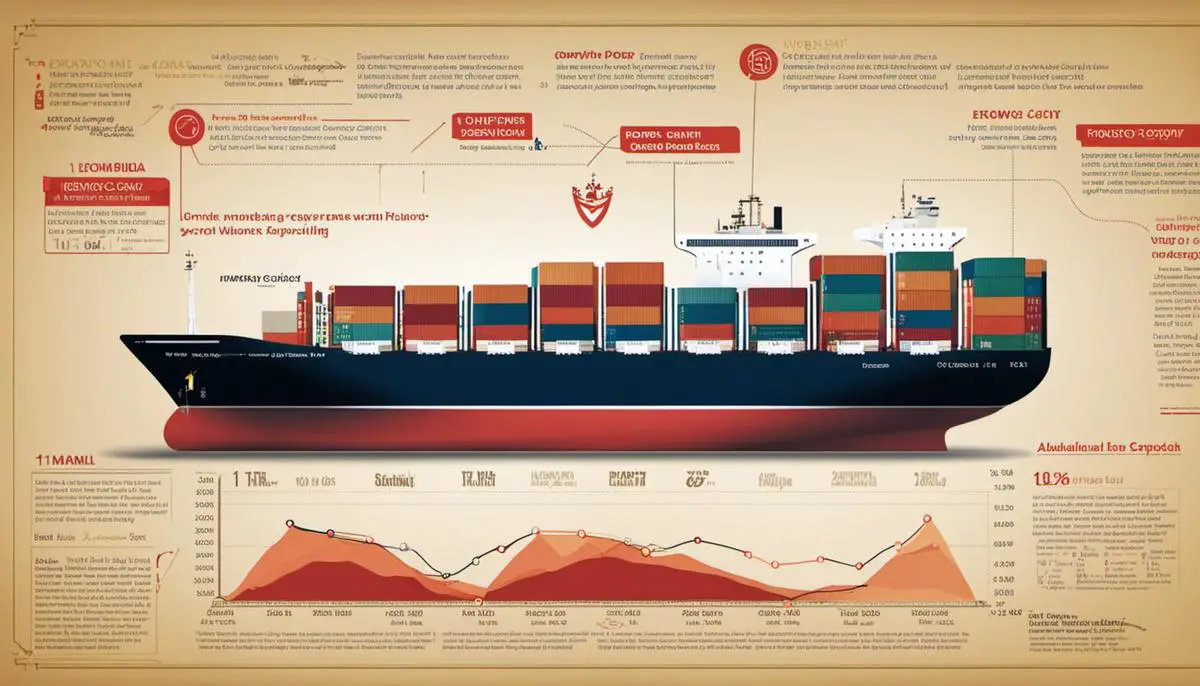Australia’s export market plays a critical role in bolstering the country’s economy, propelling growth and stability. Over the years, the landscape of this sector has significantly evolved, thriving and expanding despite the oscillating global trends. Australian exports span a broad spectrum, from commodities and manufactured products to services, each contributing to the country’s economy in unique ways. In this exploration, we chart the journey of Australia’s export market, delving into the goods and services that bring in the highest revenue. We also shed light on their impact on the economy, the industries involved, and their stand in the global market while predicting the trajectory they might take in the future.
Overview of Australia’s Export Market
Historical Overview of Australia’s Export Market
Australia, historically known for its rich natural resources, has built its economy significantly around the exportation of these materials. In the early days, wool and gold were the principal exports. As the nation advanced, its export industry diversified to include not only minerals and farming goods but also advanced manufacturing and services. The most significant growth occurred in the 1960s, when Australia started exporting iron ore and coal, elevating its standing in the global economy.Current Trends in Australia’s Export Market
Today, Australia is world-renowned for its substantial resources. Among its top exports, iron ores and concentrates rank first, contributing 20.5% to the total exported goods, followed by coal, exporting predominantly to China and Japan. Natural gas, gold, and aluminium ores are also major contributors. The agricultural sector remains important with wheat, wine, and beef as significant exports; however, their contribution to the economy has been overshadowed by the booming resources sector. Such trends show the economic importance of these exports to Australia as they dominate international trade, stimulate the economy, and create employment opportunities.Australia’s export market is evidently shifting towards the services industry, namely in education and tourism. This transition, often referred to as “invisible trade,” is predominantly on account of the widespread allure of Australian universities and popular tourist destinations. Substantial revenue increases driven by these two sectors validate Australia’s competitiveness within the global services market. This encapsulates the evolving dynamics of Australia’s export market, epitomizing its diverse economy and its adaptability in embracing emerging trends.

Top Exported Goods from Australia
Key Australian Exports: Minerals and Energy Resources
The resource sector is a vital part of Australia’s export industry, with iron ore, a crucial element in steel production, being the leading export. It accounts for roughly 20% of the country’s total export earnings. Australia stands as the world’s top iron ore exporter, with most shipments heading to China. Coal, both thermal and metallurgical, also constitutes a significant part of Australian exports. Additionally, with its vast natural resources, Australia exports considerable amounts of natural gas and gold, securing substantial revenue from international markets. These exports of minerals and energy resources greatly influence Australia’s economy, stimulating growth and creating jobs in multiple related sectors.
Australia’s Significant Roles: Agriculture and Manufacturing in Exports
Many may not know that Australia is not only rich in minerals, but it’s also a major powerhouse for agricultural products such as beef, wheat, and wool. Due to the generous size of its arable land, livestock farming and crop production are major activities that contribute significantly to its exports. Particularly in Asia, there’s a large demand for Australia’s top-notch meat products.
Over the last couple of decades, there’s also been a significant increase in Australia’s manufactured goods, adding a new dynamic to its export economy. Owing to substantial investment in medical research and development, pharmaceuticals have become a key export. Moreover, aluminum and refined petroleum products also make a sizable contribution. Although manufacturing doesn’t outweigh resources and agriculture in terms of export value, it’s fundamental to job creation and offers a pillar of stability for the economy.

Impact and Future of Australia’s Exports
The Impact of Exports on Australia’s Economy
Exports carry substantial weight in Australia’s economy, influencing it in many ways. Major commodities like iron ore, coal, gas, gold, along with agricultural products such as wheat and wool, characterize their export portfolio. Interestingly, most of these exports flow into the Asia-Pacific region, with China being a pivotal market. These exports not only bring in considerable revenue, strengthening the Australian economy, but they also stimulate job growth in various local industries and provide support to different communities. In fact, the strong export market helps Australia maintain a positive trade balance, which bolsters the overall health of its economy.
Global Market Impact and Future Outlook
The global market is heavily influenced by Australia’s exports. The iron ore exports, for instance, feed into the global supply chain for steel production, emanating Australia’s impact on global construction and automotive industries. Similarly, agricultural exports contribute significantly to global food stocks. The future of Australia’s export industry is expected to continue its growth trajectory, although it might encounter some shifts. Technological advancements would potentially increase the efficiency of extraction and production processes, creating opportunities for new products and sectors. The ongoing transition towards renewable resources also indicates a possible decline in demand for coal and gas, but an increase for lithium and nickel, crucial in manufacturing batteries for electric vehicles. Global economic shifts, including trade relationships and market demands, will also shape the future of Australia’s export industry.
Industries and Communities
Different industries that contribute to Australia’s export basket have witnessed escalated growth. For instance, the mining industry, responsible for the significant chunk of iron ore and coal exports, is one of the largest contributors to the Australian economy. Similarly, the agricultural sector, especially sheep farming for wool and wheat production, provides employment to thousands of Australians and greatly supports rural communities. Advances in technology and sustainable practices are also shaping these industries, driving growth and innovation while minimizing environmental impacts. The communities involved in these export sectors therefore, not only contribute to the economy but also undergo development themselves, improving their standard of living.

A close study of Australia’s export market offers a window into the country’s economic pulse. The revenue generated from exports of commodities, manufactured goods, and services is pivotal to Australia’s thriving economy. The influence of these exports extends beyond purely financial dividends; they shape industries, invigorate communities, and steer the nation’s position in the global marketplace. Given the current trends and technological advancements, the future of Australia’s export market appears promising. Ensuring its growth and sustainability will require smart strategies, innovation, and adaptability in the face of emerging global economic patterns.






